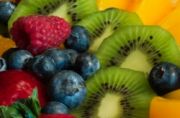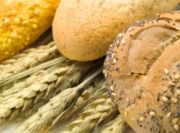What is high fructose corn syrup (HFCS)?
HFCS is not something you can cook up in your kitchen—it's produced from cornstarch in a factory using multiple chemical processes. Less expensive than sugar (largely due to high sugar import tariffs, corn industry subsidies and its easy-to-transport liquid form), HFCS is used as a sweetener and conditioner in a wide variety of foods.
The Corn Refiners Association television ads and website fail to mention a HFCS warning issued on Aug. 22, 2007 by the American Chemical Society—the world’s largest scientific society and a globally recognized leader in providing access to scientific research. The warning cited new evidence linking HFCS to the development of diabetes, particularly in children.
Is HFCS the same as sugar?
The Corn Refiners Association website states that HFCS is no different from table sugar but also states that HFCS differs from table sugar in terms of chemical structure. Sorry, but it's either different or it's not.
The chemical structure of common table sugar (sucrose) is 50% fructose and 50% glucose. The chemical structure of HFCS-55 is 55% fructose and 45% glucose. In other words, 100 grams of table sugar/sucrose contain 50 grams of fructose and 50 grams of glucose while 100 grams of HFCS-55 contain 55 grams of fructose and 45 grams of glucose. Close, but not the very same thing.
In table sugar, fructose and glucose are linked by a chemical bond. In HFCS the fructose and glucose are unbound and associated with highly reactive carbonyl compounds. These same compounds are elevated in the blood of individuals with diabetes and are blamed for vision damage, foot ulcers and other complications.
Researchers found ‘astonishingly high’ reactive carbonyl levels in the HFCS soft drinks tested. In fact, a single can of soda contained about five times the concentration of reactive carbonyls typically found in the blood of an adult person with diabetes. (On a more positive note, the same researchers found they could significantly lower reactive carbonyl levels by adding components of tea.)
No one knows for sure if the strong correlations between the increased consumption of HFCS and obesity in the US are causally related but several studies have linked high fructose consumption to negative health outcomes. HFCS-55, the HFCS concentration typically used in soft drinks and many other foods, contains about 10% more fructose than table sugar and its low cost has made sweet treats more plentiful and affordable.
Sweet treats are indulgences, not nourishment essentials, and should always be enjoyed in moderation, even when they contain honey, molasses, evaporated cane juice, or other similar sweeteners.
Corn is an important crop with many positive applications but because the safety of HFCS continues to be argued scientifically, Buffaloberries™ does not support the use of HFCS in any product or recipe.
In August, 2009, the American Heart Association released recommendations that most women should limit added sugar consumption to 100 calories a day (about 6 teaspoons or 3.5 grams) and most men should limit added sugar consumption to 150 calories a day (about 9 teaspoons or 5.3 grams).





